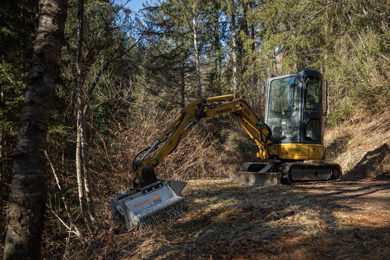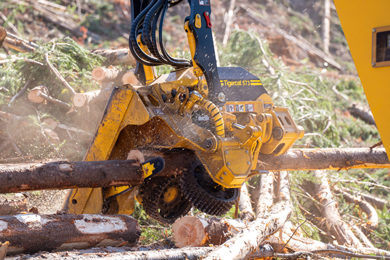This report by Harsh Choudhry and Glen O’Kelly for McKinsey & Company looks at which advanced technologies for forest management are most promising, and how forestry companies can start their digital transformation.
The authors argue that while digital technology is revolutionising industries around the globe – from manufacturing to healthcare to agriculture – forestry has lagged behind. However, this is finally starting to change. Choudry and O’Kelly report some forestry pioneers are starting to achieve productivity increases and returns on investment similar to other industries, and the size of these gains is comparable to the shift from animal-powered to mechanised processes.
Unfortunately, according to the authors, digital solutions in forestry management science currently confront a system that still operates largely on the basis of fundamentals developed by Hans Carl von Carlowitz more than 300 years ago.
However, inspired by advances in agriculture, some forestry operators have begun pioneering the use of advanced technologies to improve forest management results. Within the industry, this approach is widely called ‘precision forestry’. Precision forestry is enabled by a wide range of emerging technologies, such as drones or unmanned aerial vehicles (UAVs), laser scanning (lidar), and soil sensors.
But precision forestry is not simply the adoption of digital technologies. For forest managers, it involves a paradigm shift from a highly manual and analog system with broad-brush management prescriptions, to a system with digital data capture and planning, granular management prescriptions and tight operational control.
Each of the precision forestry technologies offers improvements to forest management through one or a combination of four ways:
- Tighter control of operations with improved data collection.
- Increased selectivity of prescriptions to match site and needs, for instance, soil nutrients and the genetic material of seedlings planted.
- Automation of operations, from nurseries to wood logistics.
- Optimised decision-making with advanced analytics.
The report details 15 precision forestry technologies or practices the authors believe show the greatest promise to transform operations and improve forest management results.
Choudry and O’Kelly found that many leading forestry companies globally are adopting precision forestry technologies and there has been a noticeable proliferation of technology suppliers seeking to develop this space. While many precision forestry technologies remain in trial phases, some are already established and increasingly gaining traction. The availability of these technologies, even of those being trialled, signals a major shift in the industry.
The authors advise that the key to capturing the potential value will be a holistic digital transformation that brings together the disparate applications of new technologies. They say companies will need an end-to-end digital transformation in terms of the four Ds:
- Discover – understand where you are and where you want to go, create a road map.
- Design – design and deliver first at small scale on limited projects and/or single site.
- Deliver – deliver at a larger scale with a broader project portfolio, potentially at all sites.
- De-risk – implement structure to reduce operational and financial risk over the long term.
In addition, they offer these five practical pointers to ensure a company is well aligned at the start of its precision forestry digital transformation:
- Start now, don’t wait for the technology to fully mature. For instance, use manual reading of UAV images while algorithms are being built. This helps narrow down the exact problems to solve and the requirements for doing so.
- Begin with your business needs. Many precision forestry technologies are used for data collection, which is only the starting point and should be followed by analytics, and only then decision-making.
- Combine technologies to address specific problems. The new technologies are most powerful when used in combination. For instance, for forest re-establishment, use UAVs to collect stocking data, analysis to identify low stocking hot spots, and decision-making to prioritise areas to replant.
- Make the best of use of existing data. This, if cleaned and integrated into one unified data set, may be enough in itself to run predictive analytics and drive improved decision-making.
- Consider the full set of enablers. Don’t look at just the new technologies – consider the IT backbone, business processes, capabilities, and organisational setup as well.
The report concludes: “The advent of these new tools and capabilities offers potential beyond raising the efficiency of practices handed down from the 18th century. It heralds the start of a revolution in how we manage the health and the performance of the world’s forests.”
The full report is available online.
Photo: McKinsey
Source: FWPA R&D Works







